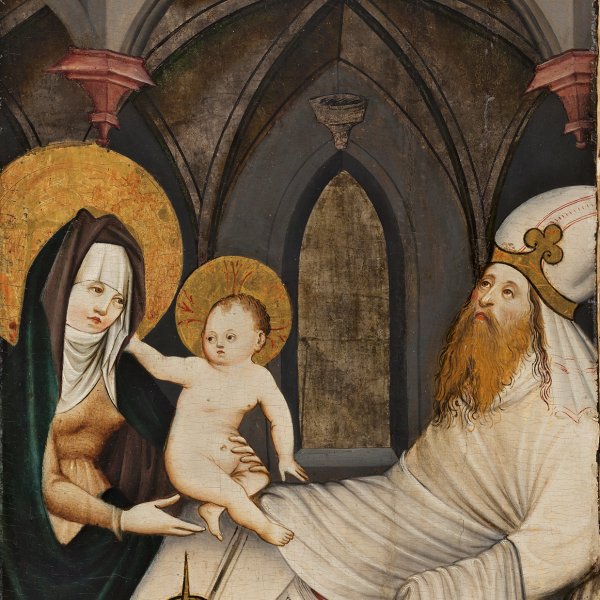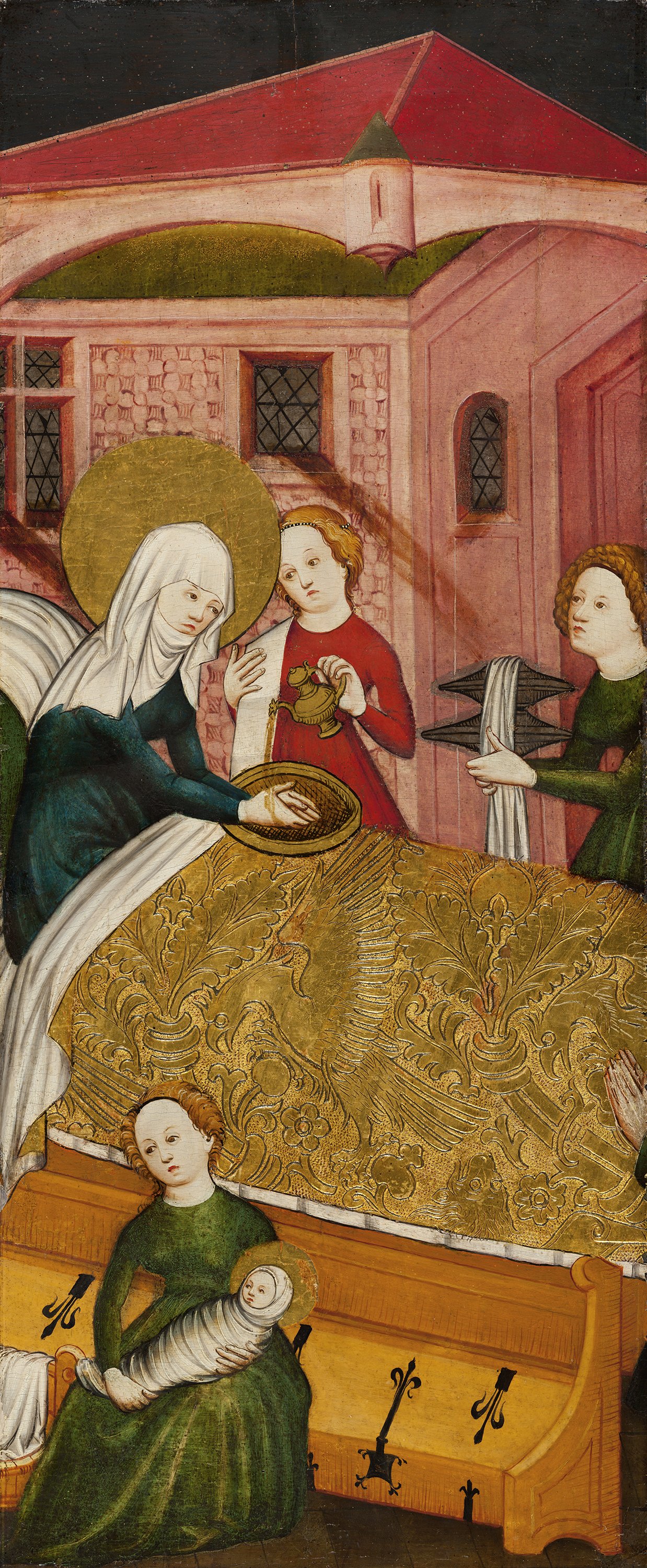The Birth of the Virgin
These two panels were painted by an anonymous 15th-century German artist and may have formed part of a larger ensemble. They were cut down in the past at the edges, as can be seen in the detail of the two hands at the edge of The Birth of the Virgin, which may have belonged to a praying figure. Both scenes are set in simply constructed interiors in which the figures and objects are rather awkwardly located within the pictorial space. In The Birth of the Virgin we see Saint Anne sitting in bed, having just given birth to her daughter. Around her are the holy women who attended the birth, one of them at the foot of the bed holding the Virgin in her arms. The Presentation in the Temple depicts the inside of a church with an altar that separates the three figures: Simeon on the right, and the Virgin and Child on the left. These two panels have been stylistically related to three others.
These two panels, which entered the Thyssen-Bornemisza collection together in 1967, were part of a larger ensemble. They were altered in size at an unknown date, as the cut-down edges reveal. This reduction affected the narrative in The Birth of the Virgin in which the hands of a figure, possibly in prayer, is all that is left of a figure on the right on the level of the bed.
The characteristics of the two panels suggest that the entire composition — which would have been extremely elaborate given the significant use of gold and silver in large, carefully chosen areas of the interiors — was possibly devoted to the subject of the life of the Virgin. In The Birth of the Virgin, which is set in an interior, Saint Anne is shown in bed, completely dressed and with a headdress and halo. The bed, which is covered with an elaborately decorated bedspread, creates a diagonal that articulates the space and divides it into clearly defined zones in which the figures are placed. In the foreground a young woman is seated on a bench, having bathed and swaddled the infant Mary whom she cradles in her arms. At the same time, Saint Anne washes her hands before eating, assisted by a woman, while another brings food in two dishes covered with a cloth. The episode of the birth of the Virgin does not appear in the Gospels but is to be found in texts in the Apocryphal Gospels.
In The Presentation in the Temple the artist located the scene in the interior of a Gothic church. Again the space is divided, this time by an altar, on either side of which we see the principal figures. Simeon, on the right, prepares to receive the infant Christ in his arms, which are concealed beneath a white cloth as a sign of respect so that he should not directly touch the Saviour. Christ forms the link that unites the two parts of the composition and maintains an emotional link with his mother, looking at her and affectionately touching her headdress.
These two scenes are ingeniously organised with a limited number of different elements. A certain clumsiness can be detected: for example, by applying the laws of perspective to Saint Anne’s bed and to the altar in the other scene, these elements are not convincingly integrated into their respective compositions. On the other hand, both scenes work effectively enough to create a sense of atmosphere. The figures are similar with regard to physical features and the manner of depicting the mouths is particularly distinctive. They are small, with the upper lip pronounced in the centre and the lines at the edges sloping slightly downwards.
These two episodes have been stylistically associated with two further panels that are similar with regard to the construction of the heads, the figure types, the use of gold and the chromatic range. The two works in question are a Pentecost in Donaueschingen and a Head of the Virgin in the Karlsruhe Kunsthalle, both of which can be related to the style of the artist of the present panels or to his workshop. Lübbeke also suggested that an Annunciation in the Chillingworth collection should be added to this group and that itsstyle indicates that it may have formed part of the same ensemble to which the present two panels originally belonged.
Mar Borobia






